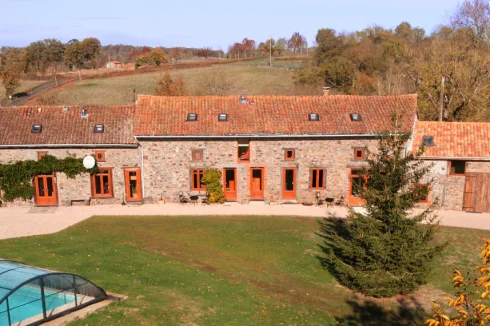Building an Extension to French Property
Saturday 13 May 2017
Building an extension to your French property normally requires administrative consent, but the regulations that apply depend upon on the scale of the works.
Strictly speaking, under current regulations, an attic conversion isn't considered to be an extension although there would still be formalities to consider.
As a rule there would be no planning taxes (taxe d'aménagement) to pay and no increase in habitable space unless the project included new dormers for example, or a raising of the roof - both of which do increase the habitable space.
Where the extension is no greater than 5m2 no form of consent is required; you have the right to undertake the work without any procedural formality. This assumes that you do not change the exterior aspect of the existing property, when consent would then be required. Once you have used your 5m2 permitted allowance you cannot do so again.
Beyond 5m2 then the consent required will depend on a number of factors.
Arthur Cutler of planning consultants French Plans states that : "Within an area that has a local plan in place, either Plan d’Occupation des Sols (POS) or Plan Local d’Urbanisme (PLU), it is possible to construct an extension of up to 40m2 without the need for planning permission. This only applies where the property is in zone "U" of the local plan. Properties in any other zone (N, A, etc) are limited to 20m². That does not mean you escape all formalities, for it will still be necessary to submit a works declaration, called a déclaration préalable de travaux. "
This requires at a minimum that you complete an application form, and submit a location plan and three-dimensional scale drawing, but it should all be signed off within a month. You will also need a before and after site plan, cross section, before and after elevation drawings, RT2012 thermal attestation, etc. If you hear nothing from the council for one month the application is deemed approved, but it is desirable to obtain an actual declaration of non-opposition.
In some circumstances, such as proximity to an historic building, additional information and plans are required, which increase the time allowed for consideration of the application.
Outside of those areas, where no POS or PLU is in place, then exemption from the need for a planning application is reduced to 20m2. A declaration is a planning application, just a different type.
Many people are confused that making a declaration is more like just informing the authorities what they are doing and that the result is a given, but that is far from the case.
As many rural councils only have in place a more limited local plan, called a carte communale, this frequently means that owners of rural properties are limited to 20m2 without the need for a planning permission. A carte communale divides the commune into constructible and non constructible zones.
There is no guarantee that any property in the latter (ie rural areas) can be extended at all, though there is a general tolerance to allow extensions (one time only). The limit will vary from area to area, often up to 30m² is considered tolerable.
In addition, if the extension increases the size of the property above 150m2, then a planning application is necessary, when you are also required to use a qualified and registered architect. This also applies to a declaration also where the existing floor area is below 150m² and the extension increases it above 150m².
Particularly with urban or conservation areas there will be planning policies that apply regarding the nature of permitted development for extensions. These regulations are likely to govern the height of the extension, colours and materials.
There are also more general regulations national regulations government proximity to neighbouring propertes an highways.
Site publicity requirements apply for all approved works, which grant third parties with a verifiable interest in the peoct (eg neighbours) the right to contest the consent.
Thank you for showing an interest in our News section.
Our News section is no longer being published although our catalogue of articles remains in place.
If you found our News useful, please have a look at France Insider, our subscription based News service with in-depth analysis, or our authoritative Guides to France.
If you require advice and assistance with the purchase of French property and moving to France, then take a look at the France Insider Property Clinic.





